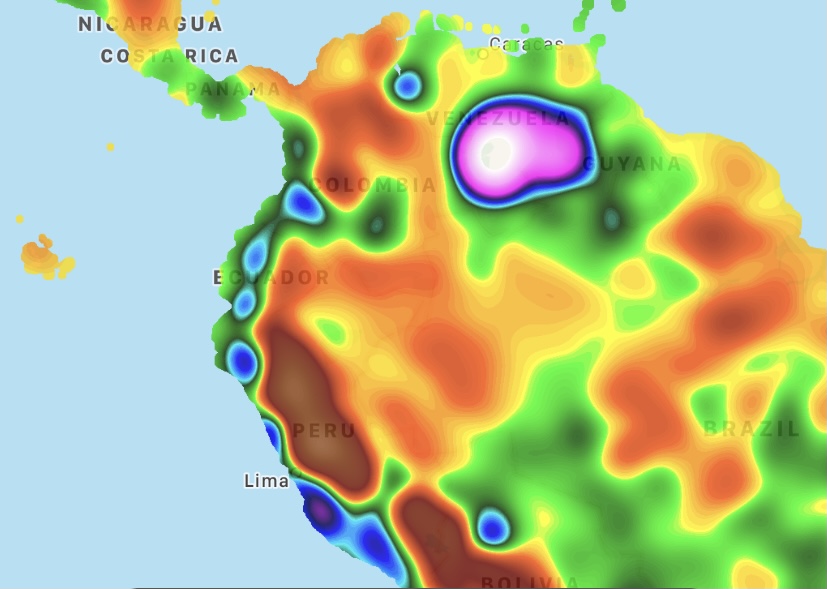I was looking through the Weatherbug atmospheric pressure map around 8:30 am ET on Oct 26 2021, and noticed this chain of small high pressure blobs along the west coast of South America. It was also present around a few days prior, around 8 am ET on Oct 23 2021.
I looked up the geography and major winds in the region and noticed
- This is a region with mountains nearly along the coast
- There are northbound trade winds that roughly hug the coast
I then looked for a similar effect in other places with similar conditions and found this other high pressure chain along the southwest edge of Indonesia (screenshot from around 12 pm ET on Oct 26 2021):
There's a coast-hugging wind along this region (this one eastbound), and as far as I can tell the mountains here are lower than the ones in South America. I've noticed the high pressure blobs seem smaller and have a lower maximum pressure, though this may be due to it being night there when I checked.
With all that background information, my questions are: what, physically, causes this effect? Are these high-pressure chains semi-permanent, and if so, do the individual blobs tend to stay in the same place or shift around a bit?
My background's in physics rather than meteorology so I'd love an answer that describes the physical phenomena or "follows the wind" as it encounters mountains and valleys. Bonus points for descriptions of how e.g. mountain spacing, mountain height, wind speed, etc may affect blob spacing and pressure magnitude.


